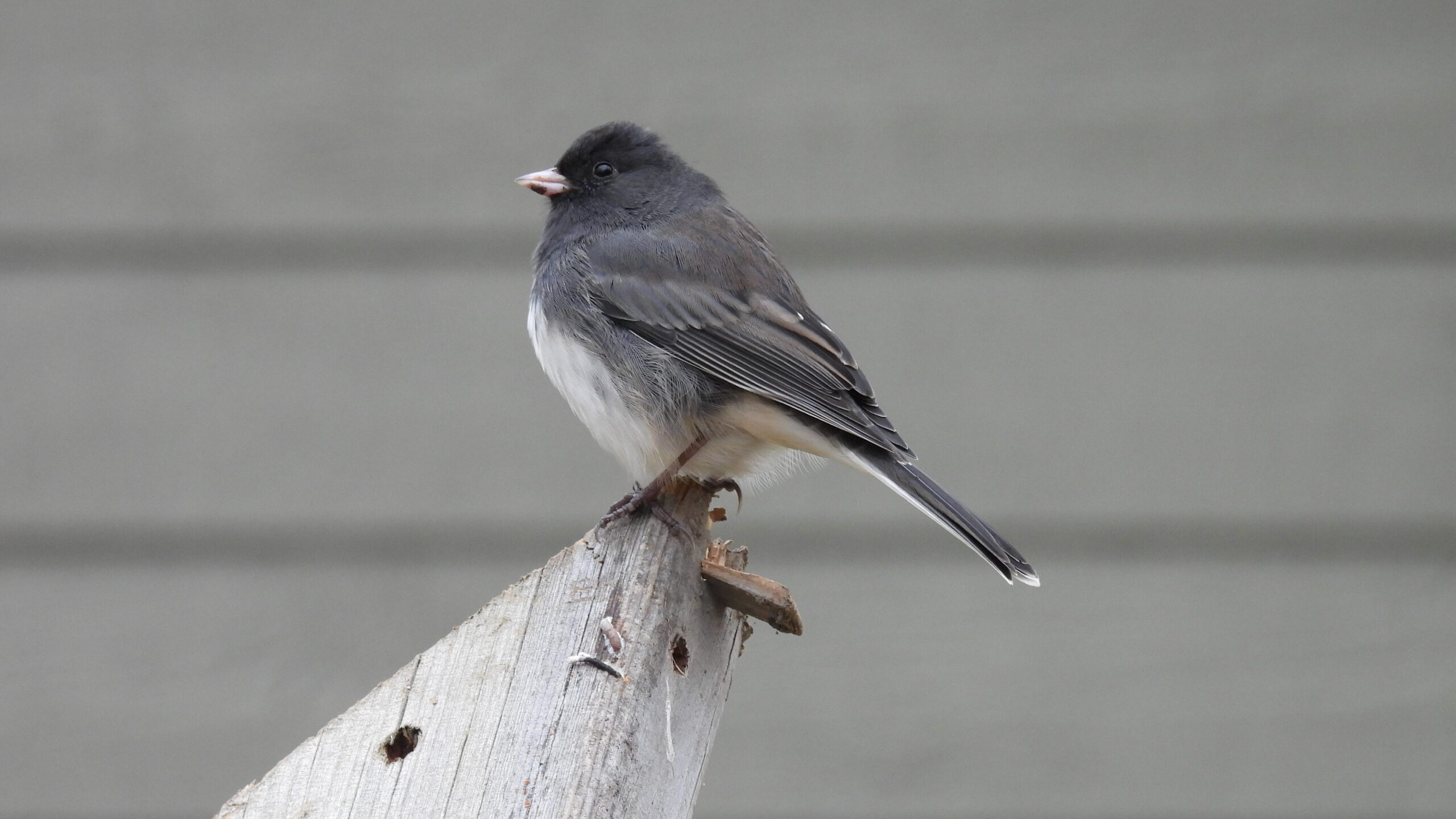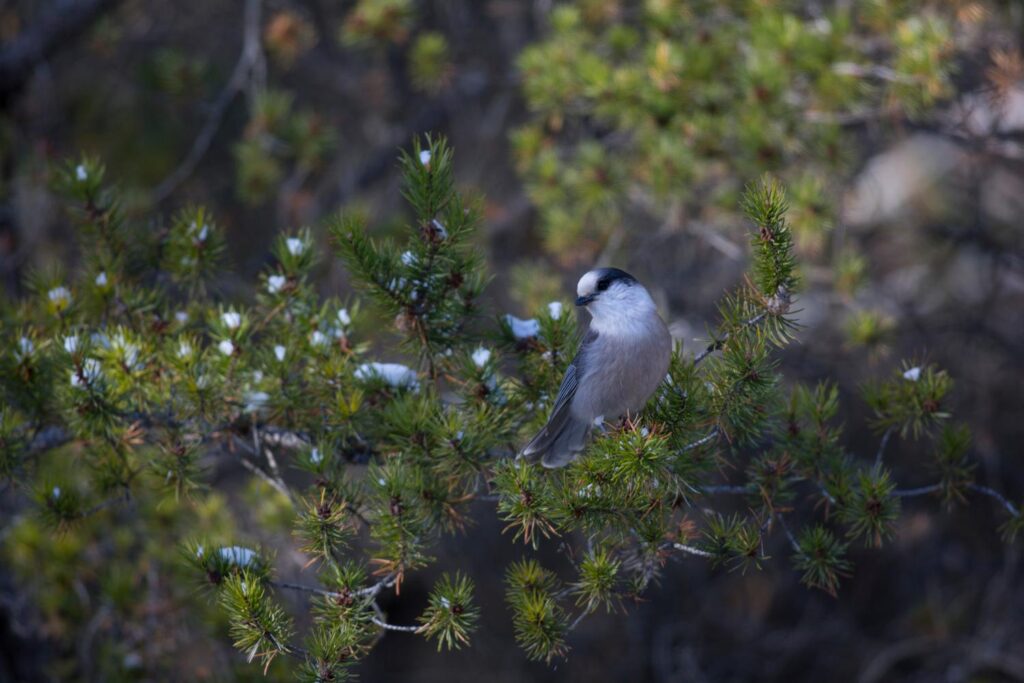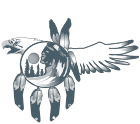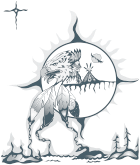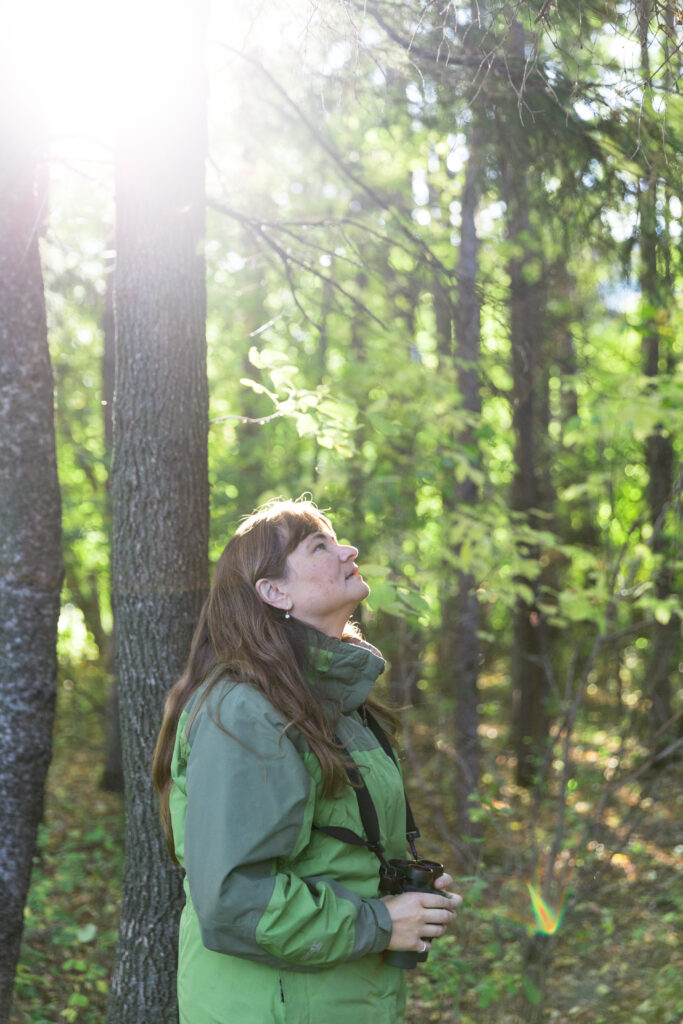
Selections from telephone interviews and conversations between Pimachiowin Aki Guardians Melba Green (Bloodvein River First Nation) and Dennis Keeper (Little Grand Rapids First Nation), and Dr. Nicola Koper, Professor, and PhD Student Chris De Ruyck of the Natural Resources Institute (NRI).
What birds are you seeing in Bloodvein River and Little Grand Rapids?
Melba: We see a lot of blue jays here in Bloodvein. A lot of people are feeding birds and blue jays come around.
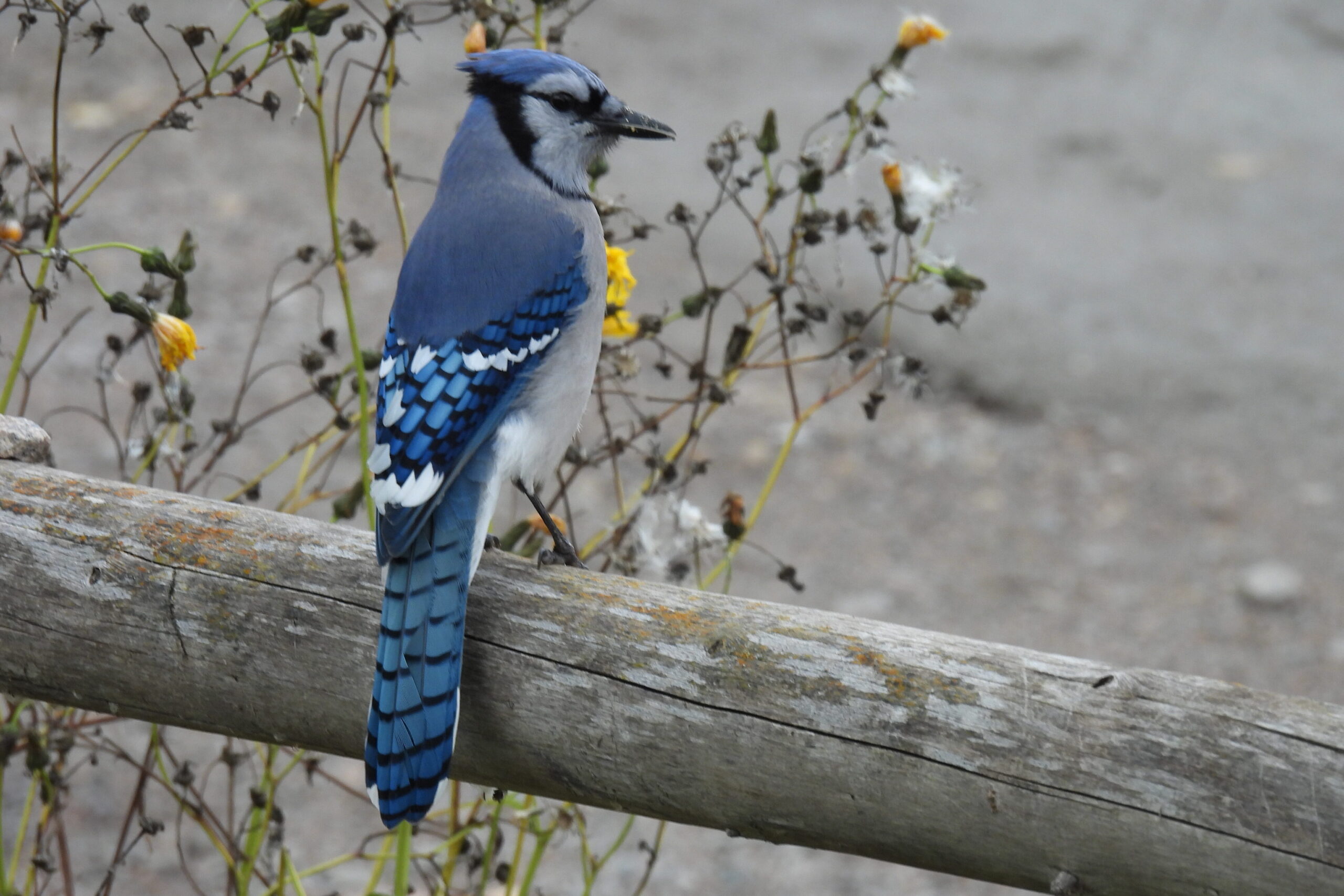
Dennis: We rarely see blue jays. Or ptarmigan. But in the last couple of years, the ptarmigan are coming in huge flocks—200 or more! It used to be 10-20 in a group. We have had them covering this whole area. People are asking if you could eat them. People harvested them and saw that they were carrying some kind of bugs.
Nicola: That is really cool. We’ve had records of a few flocks near Winnipeg. They are not supposed to be here, so far out of their range. If we have species moving out of their natural range, they might be exposed to parasites that they are not tolerant of. If you have a species that evolved in the north, they might not be resistant to parasites in the south. It might be possible that ptarmigan are having problems in Pimachiowin Aki because it’s an area where they are not supposed to be. We could work with a parasitologist on those kinds of things—study where birds are and what health they are experiencing.
Dennis: Last year, the geese went back really early, around the last week of August. It’s usually the middle of September when you start to see the real migration. I don’t think they even nest around here anymore. I found a few eggs. And I didn’t see any snow geese pass by this way this year.
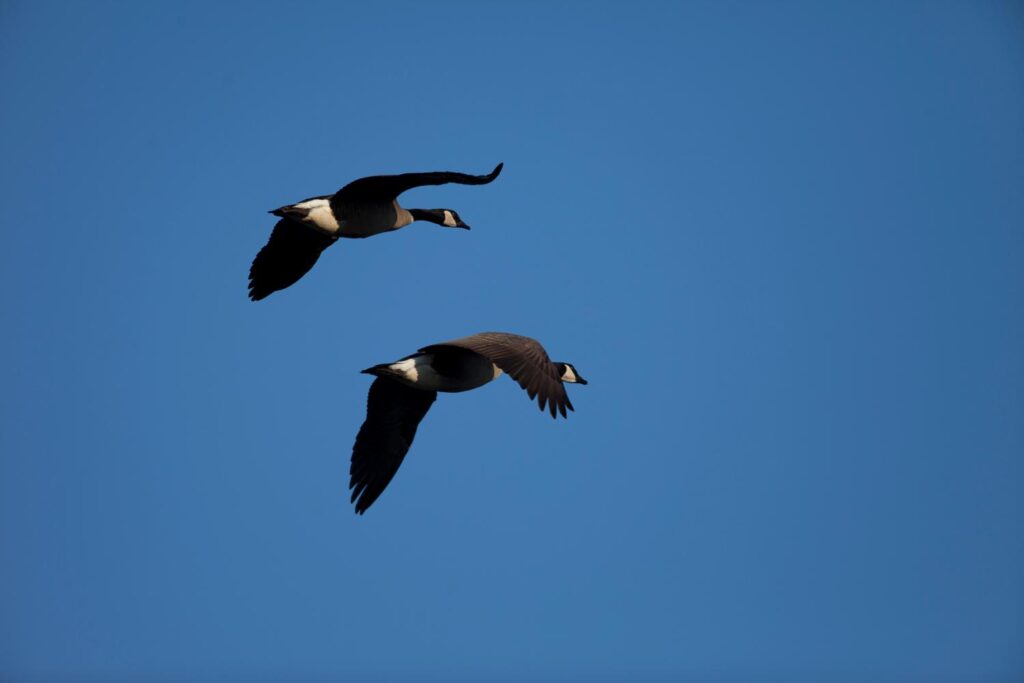
Nicola: I hope we can learn more about that through the type of monitoring we are talking about here. I’m interested in the common nighthawk and Canada warbler because they are species at risk. I’m also interested in exotic species like the house sparrow and European starling, which are starting to move further north because of climate change. It would be interesting to know if they have higher or lower populations in Pimachiowin Aki than in areas that are more influenced by western society.
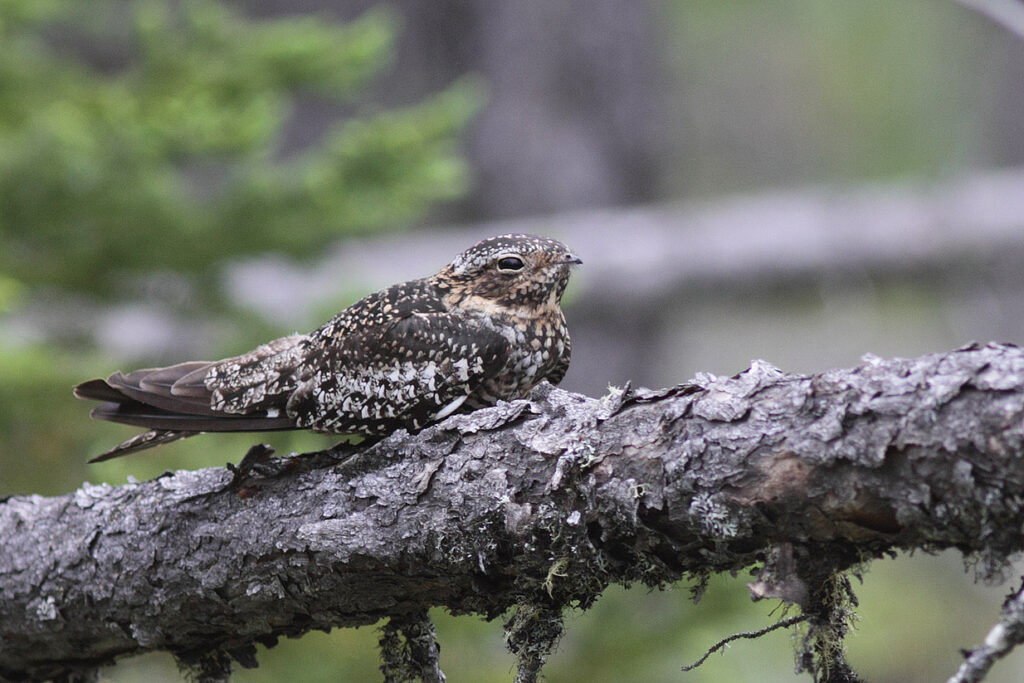
Dennis: I’m concerned about the Canada jay. They store their food in black spruce. With the warming, their food goes bad and they abandon their nests. We used to see them everywhere. In the last four years, I have only seen one. It was by itself. Usually, we see them in groups.
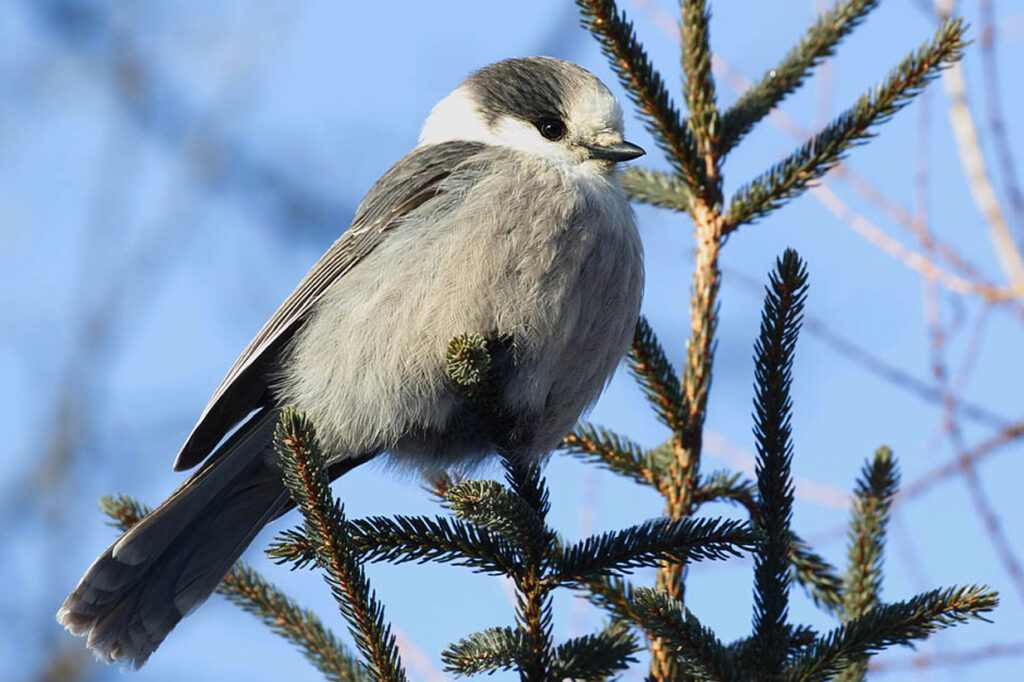
Nicola: I also think that I have not seen as many [Canada jays] in the last couple of years. This is one of the species that we would be able to monitor. By being on the land, there is so much opportunity for you to make these observations.
Dennis: I’ve also been trying to find out about this one type of bird I’ve been observing for years. It’s dark in colour but when I get closer it’s greenish in colour and has a yellow banana nose. It’s nesting in buildings like the water treatment plant.
Nicola: Maybe the European starling. Look for little specks on them. They are black with iridescent green and purple.
Dennis: Short tail?
Nicola: Yes! The observation you made is really interesting because the European starling is a species that is very closely tied with humans. The fact that you might have them nesting there in buildings, tied with human structures, could mean that it’s what you’re seeing.
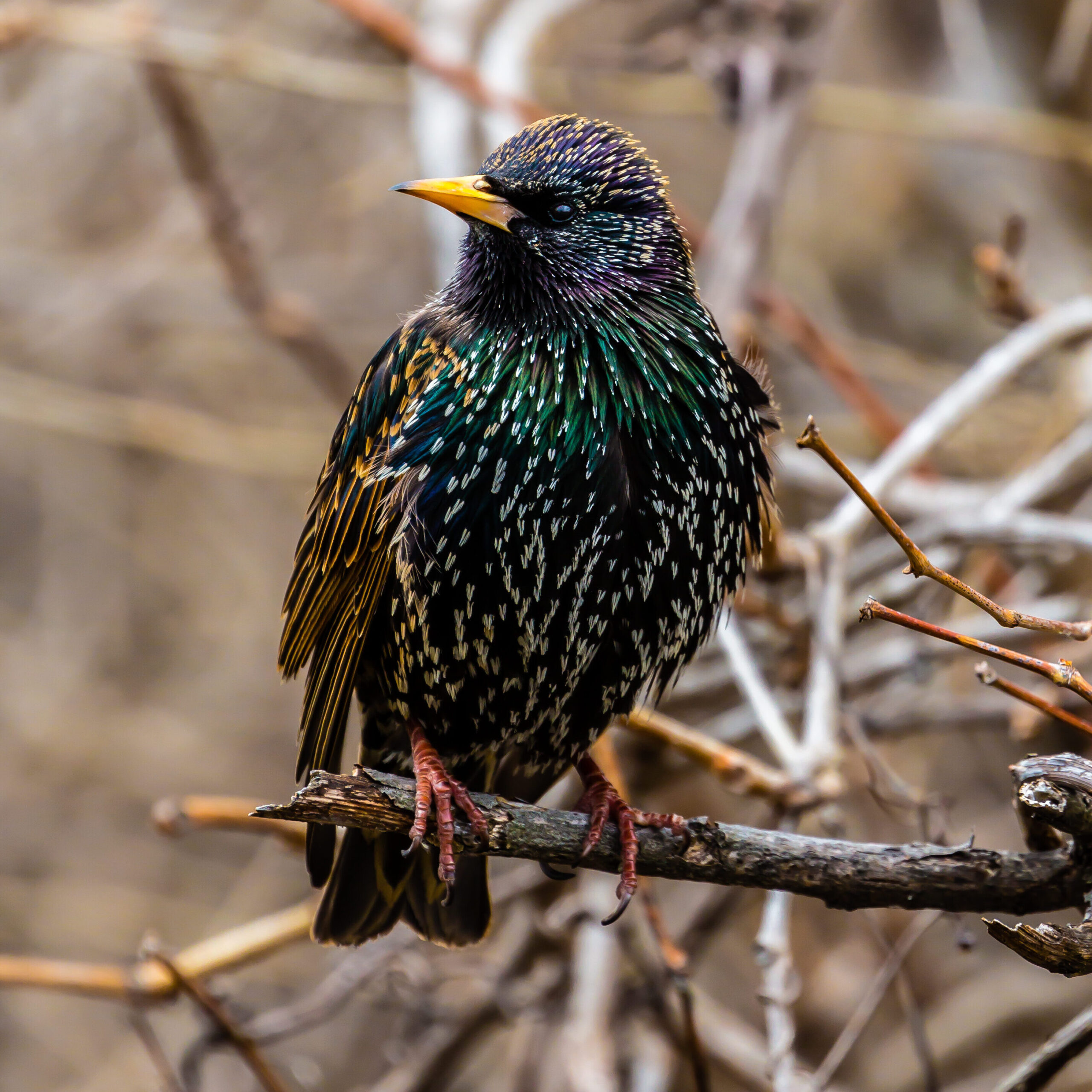
Chris: European starlings are not native to North America but I think they helped us out with the canker worms [last summer]. Birds love those outbreaks. Even if adults don’t eat the worms, they feed them to their young.
Nicola: Most species, even if they eat seeds, don’t feed seeds to their young. They feed them insects because insects have more protein than any plant matter would. That’s one of the reasons we don’t want to lose birds—because they perform roles that are good for wildlife and people.
Dennis: This year, I saw an eagle in January. It was a warm day. We usually see spring birds in March—known as the eagle moon month because eagles return to Pimachiowin Aki in March. They come before the geese. They wait for them to bunch up, then they attack them at a certain time of the day.
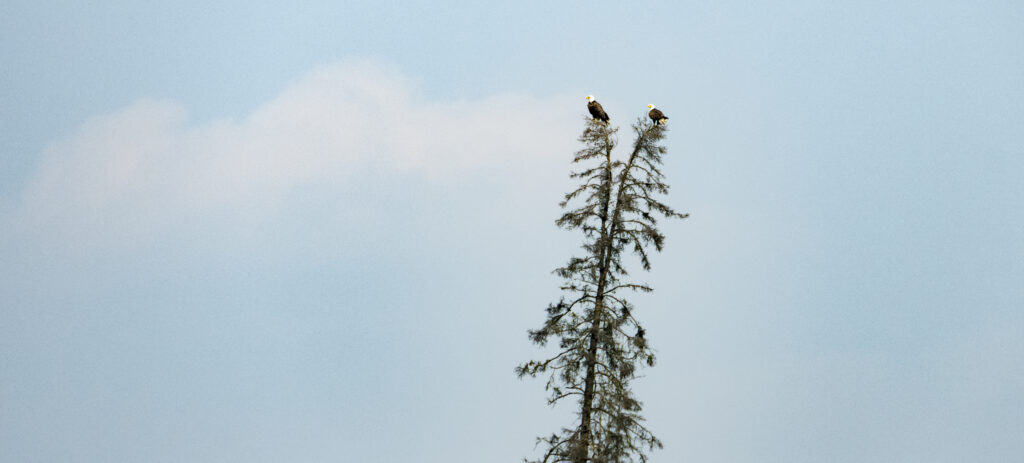
Chris: It will be really interesting to hear how birds this year are different from next year.
Melba: I can’t wait! I’ll take my camera with me out on the land, and take lots of pictures.
Chris: It can be hard to get a good picture. When you get your camera on them, there’s an idea that the birds might think it’s a large eyeball staring at them, like an owl or something, and they might not like it very much.
Melba: I know birds don’t like you bothering them. You have to stand around for quite a while until they come back.
Want to view Melba’s photos of birds?
Join us on Facebook to see her beautiful shots.
